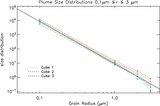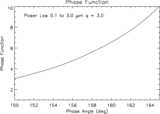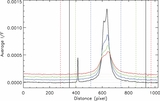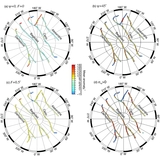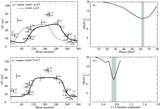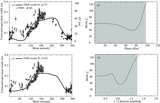Image Details
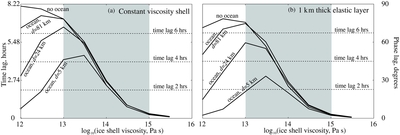
Caption: Figure 11.
Phase lag as a function of ice shell viscosity and shell thickness d. (a) Enceladus' interior structure parameters are identical to those used in Figure 3 of Nimmo et al. (2007). The shaded region gives the likely viscosity of a convecting ice shell. The phase lag was calculated from tan−1 (h2i/h2r) where h2i and h2r are the real and imaginary degree-2 Love numbers. Note that the amplitude of the tidal response (Figure 3 of Nimmo et al. 2007) is more strongly affected by the shell thickness than is the phase. The horizontal dashed lines indicate time lags for comparison with our inferred lag of 5.1 ± 0.8 hr. Calculations were performed using the method of Moore & Schubert (2000). (b) As for panel (a), but including a rigid elastic surface layer of thickness 1 km. For a synchronous satellite, the time lag and phase lag are simply related by ψ = n Δt where n is the mean motion.
Copyright and Terms & Conditions
© 2014. The American Astronomical Society. All rights reserved.




